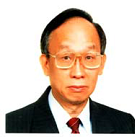
Albert M Wu
Chang Gung University, Taiwan
Title: Roles of polyvalency of glycotopes in the mechanism of protein-glycan interactions, one of the most potential directions for the transforming glycosciences
Biography
Biography: Albert M Wu
Abstract
Lectins are Glycan Binding Proteins (GBP). On cell surfaces, they mediate cell-cell interactions by combining with complementary carbohydrates on opposing cells. They play a key role in the control of various normal and pathological processes in living organisms, such as fertilization, embryogenesis, cell migration, organ formation, immune defense and microbial infection. Improper function of cell recognition may cause disease. The hallmark of lectins is the ability to bind carbohydrates specially and reversibly. To provide a more valid and satisfactory depiction of the carbohydrate specificity, RFs (Recognition Factors) of lectins in order to elucidate their functional roles and to optimize their biomedical applications, the following RFs have to be defined (1) Sub-monosaccharide RFs (epimers and anomers of monosaccharides); (2) Monosaccharide specificity (Gal, GalNAc, GlcNAc, Man, LFuc and Sialic acid from mammalian glycans); (3) Expression of a lectin reactivity’s toward structural units by decreasing order; (4) the most active ligand; (5) simple multivalent or cluster forms of carbohydrate structural units; (6) complex polyvalent structural units and/or glycotopes as well as their resulting conformational features present in macromolecules. These RFs can be divided into two forms for different functions- the mono- forms are the weak RFs and provide mainly essential and basic structures for lectin identification and classification, while their polyvalent forms and resulting conformation features play a critical role in recognition intensities. The roles of polyvalency of glycotopes in the Mechanism of Protein-Glycan interactions should be one of the most advanced achievements in the field of Glycoimmunology since 1980.

